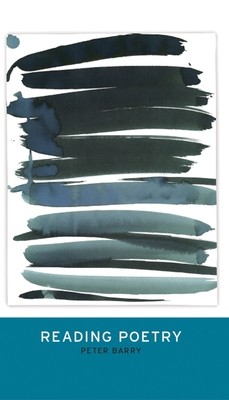
- We will send in 10–14 business days.
- Author: Peter Barry
- Publisher: Manchester University Press
- Year: 2014
- ISBN-10: 071908850X
- ISBN-13: 9780719088506
- Format: 13.7 x 21.6 x 2 cm, hardcover
- Language: English
- SAVE -10% with code: EXTRA
Reviews
Description
This book is about reading and studying poetry. Using fully-worked examples and complete poems wherever possible, it shows all the key elements of poetry 'at work' in poems, rather than in artificial isolation. It covers many different kinds of verse, from traditional and mainstream forms which have been in existence for hundreds of years, to innovative and experimental versions of the art, such as 'concrete' poetry, various kinds of minimalism, and poems which contain no words at all. The emphasis is on responding to meanings rather than just to words, and the reader is encouraged to look beyond technical devices such as alliteration and assonance, so that poems are understood and enjoyed as dynamic structures geared towards the creation of specific ends and effects. The three sections of the book cover progressively expanding areas of concern - 'Reading the lines' deals with basic matters, such as imagery, diction, metre, and form; 'Reading between the lines' concerns broader matters, such as poetry and context, and the reading of sequences and groups of poems, while 'Reading beyond the lines' looks at 'theorised' readings, at how place and time in poetry are never quite what they seem, and at the 'textual genesis' of poems from manuscript to print. The book is aimed at those studying poetry on university-level literature courses, and at lecturers and teachers who are looking for new ways of imagining, presenting, and discussing poetry. It is also for all those seriously interested in poetry, whether as readers or writers, or both.
EXTRA 10 % discount with code: EXTRA
The promotion ends in 18d.15:05:55
The discount code is valid when purchasing from 10 €. Discounts do not stack.
- Author: Peter Barry
- Publisher: Manchester University Press
- Year: 2014
- ISBN-10: 071908850X
- ISBN-13: 9780719088506
- Format: 13.7 x 21.6 x 2 cm, hardcover
- Language: English English
This book is about reading and studying poetry. Using fully-worked examples and complete poems wherever possible, it shows all the key elements of poetry 'at work' in poems, rather than in artificial isolation. It covers many different kinds of verse, from traditional and mainstream forms which have been in existence for hundreds of years, to innovative and experimental versions of the art, such as 'concrete' poetry, various kinds of minimalism, and poems which contain no words at all. The emphasis is on responding to meanings rather than just to words, and the reader is encouraged to look beyond technical devices such as alliteration and assonance, so that poems are understood and enjoyed as dynamic structures geared towards the creation of specific ends and effects. The three sections of the book cover progressively expanding areas of concern - 'Reading the lines' deals with basic matters, such as imagery, diction, metre, and form; 'Reading between the lines' concerns broader matters, such as poetry and context, and the reading of sequences and groups of poems, while 'Reading beyond the lines' looks at 'theorised' readings, at how place and time in poetry are never quite what they seem, and at the 'textual genesis' of poems from manuscript to print. The book is aimed at those studying poetry on university-level literature courses, and at lecturers and teachers who are looking for new ways of imagining, presenting, and discussing poetry. It is also for all those seriously interested in poetry, whether as readers or writers, or both.


Reviews